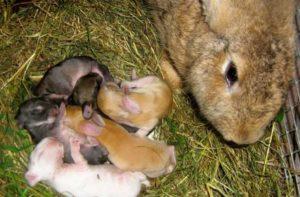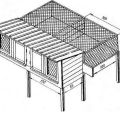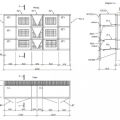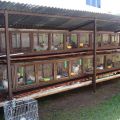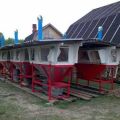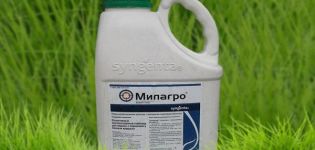A simple diagram of the construction of a rabbitry with your own hands, drawings and dimensions
Keeping rabbits will not be successful if you do not provide them with comfortable living conditions. A strong, spacious, properly equipped rabbitry allows you to preserve the health of animals, ensures the productivity of the livestock. If it is not possible to purchase a ready-made structure, then you can use the scheme for making a rabbit house with your own hands. A rabbit's dwelling should be comfortable, convenient for cleaning, disinfecting and caring for pets.
Primary requirements
A good rabbitry should be:
- optimal for rabbits in size;
- built from inexpensive but high quality materials;
- designed with the possibility of complete and partial assembly and disassembly;
- wear-resistant;
- having a strong frame;
- appropriate sanitary and hygienic standards;
- designed with the possibility of insulation for the winter;
- structurally convenient for cleaning and disinfection, feeding and watering pets.
Varieties of designs and their features
There are 3 main varieties of rabbitries intended for keeping mature and young individuals who have given birth to rabbits. Each variety has its own dimensions and design features:
- For a couple of individuals. Usually novice breeders buy a pair of rabbits for breeding: a male and a female. For animals, they make a cage with their own hands, divided into two sections. The dimensions of the rabbitry are: length - 140 cm, width - 70 cm, height - 60-70 cm. The sections are divided by a mesh feeder for hay. A multi-tiered installation of cages is possible, but in this case, the lower rows must be artificially ventilated.
- For young individuals. Rabbits are kept in these cages for up to 2 months, then they are moved to standard rabbitries for mature individuals. The dimensions of the building are determined taking into account the young livestock: each rabbit requires at least 0.2 m2... The standard dimensions of a do-it-yourself rabbitry are: length - 300 cm, width - 100 cm, height - 35-40 cm.
- For a rabbit with cubs. The pregnant female is placed in a comfortable cage, where she will stay until the born rabbits get stronger. Part of the mother liquor occupies a nest made of wooden planks, its length is 35 cm, width is 28, height is 30. The mother liquor should be equipped with a round hole so that the female can climb into the nest, and an upper door so that the owner can control the condition of the offspring. The floor is densely lined with sawdust. If the mother liquor is in the yard, then a space is separated for the infrared illuminator.

How to choose a seat
Rabbits are less sensitive to cold than heat, so no direct sunlight should enter the cages. It is advisable to make a canopy over the rabbitry, protecting both from the scorching sun and from precipitation. Rabbits are susceptible to drafts, so the selected location should be fenced off from the winds by buildings or dense vegetation.
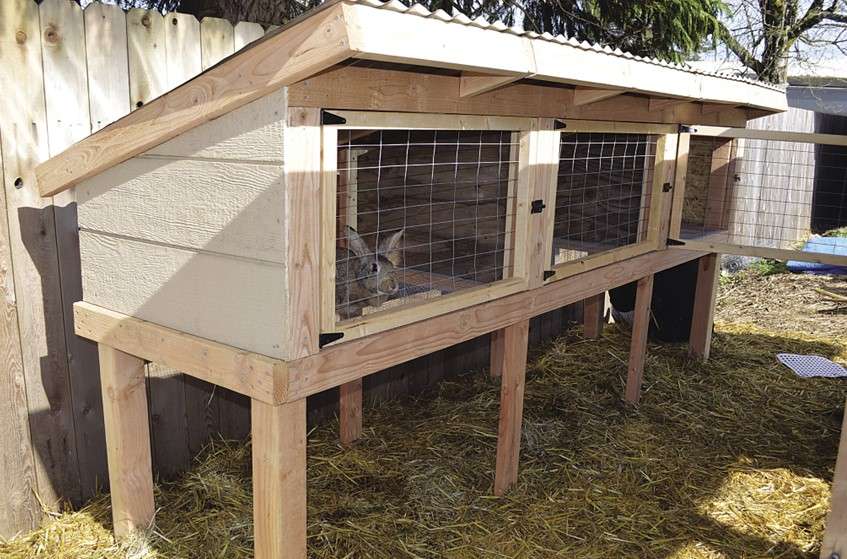
Many farmers build rabbits with their own hands near the shed where the feed is stored. In this case, you do not have to run back and forth to feed a large livestock.
Rabbits should not be built near the compost heap. She is the source of many pathogenic microorganisms that can cause infectious pathologies in rabbits. Pets also get sick when they live in dampness. Therefore, for the construction of the rabbitry, a dry and elevated place is chosen.
You should not settle rabbits near the barn, chicken coop, dog kennel. The noise made by other animals will frighten the eared animals. And stress negatively affects the state of the rabbit's body.

Dimensions and Drawings
The planned rabbitry must be depicted schematically to make it easier to build, as well as to select the necessary materials.
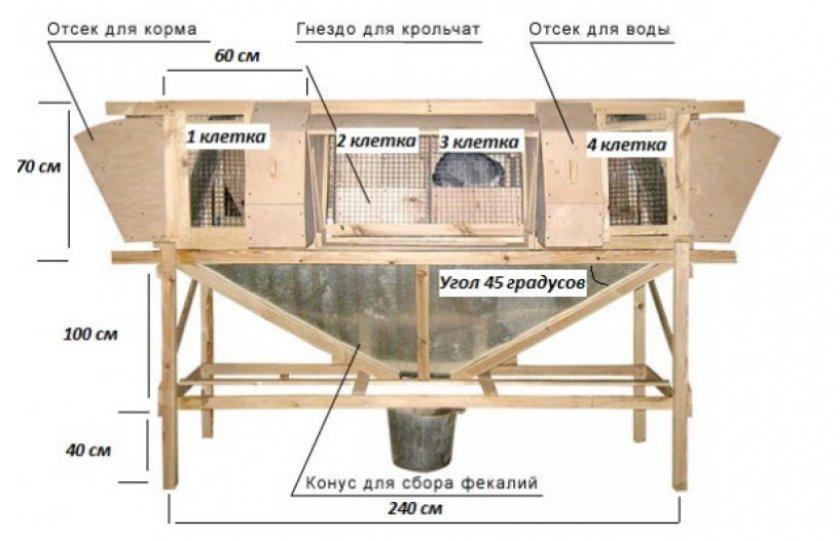
When choosing a scheme, you need to take into account the number of rabbits and the dimensions of the breed representatives:
- the optimal area for one young animal is 0.2-0.4 m2;
- for a rabbit selected for breeding - 0.8-1 m2;
- for a mature animal when kept in groups - 0.5-0.8 m2;
- for a nursing female and cubs - not less than 0.6 m2.
The circuit itself is simple, they do it like this:
- Draw a rectangle repeating to scale the parameters of the rabbit dwelling.
- Define sections.
- The location of the feeders, doors, partitions, nests is noted.
- Taking into account the drawing made, a side sectional diagram of the rabbitry is performed. Moreover, the cut is made where there are most of the structural elements in order to more accurately calculate their position.
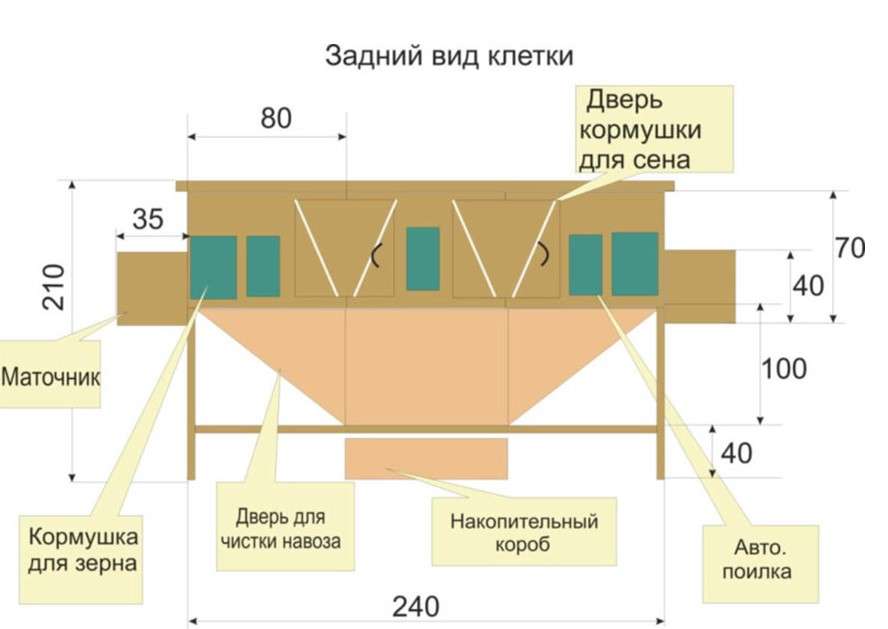
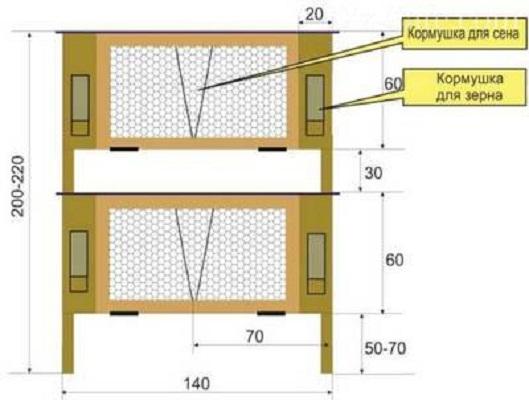

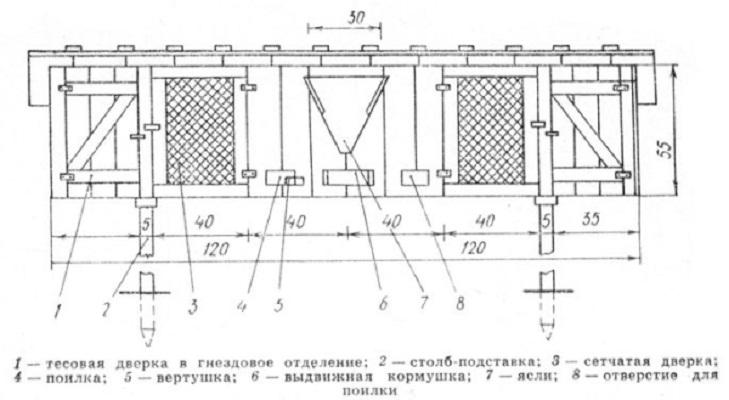
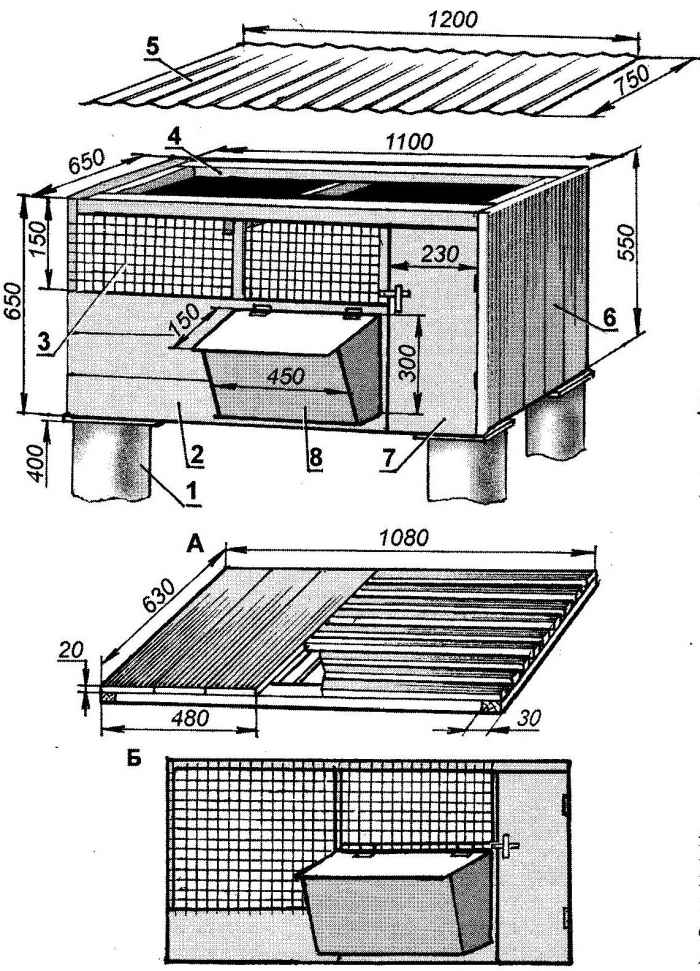
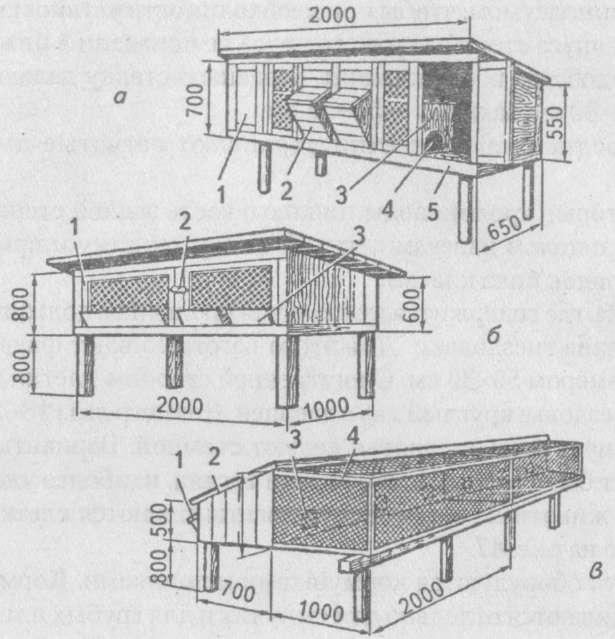

How to make a rabbitry with your own hands
Even an inexperienced farmer can make a home for rabbits with his own hands. The main thing is to prepare the necessary materials, draw an accurate diagram. A standard rabbitry is a frame block structure sheathed with mesh or moisture-resistant plywood plates, chipboards, boards.
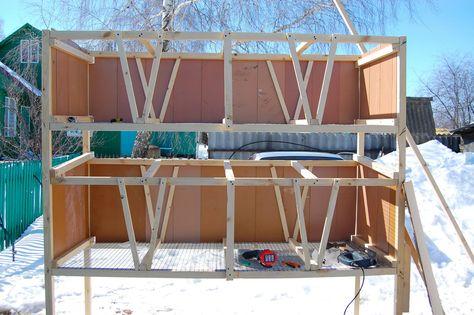
How to make the floor
There are two options for laying the floor. In the first case, wooden boards are placed on the frame. A distance of 1 cm is made between them. Through the holes, feces will fall into the waste pan. The downside is that rabbits often gnaw such flooring. In the second case, a fine-mesh mesh is placed on the frame, the diameter of the holes in which is not more than 2.5 × 2.5 cm. Before the arrival of winter, a plywood plate is placed on the mesh so that the pets do not numb their paws.
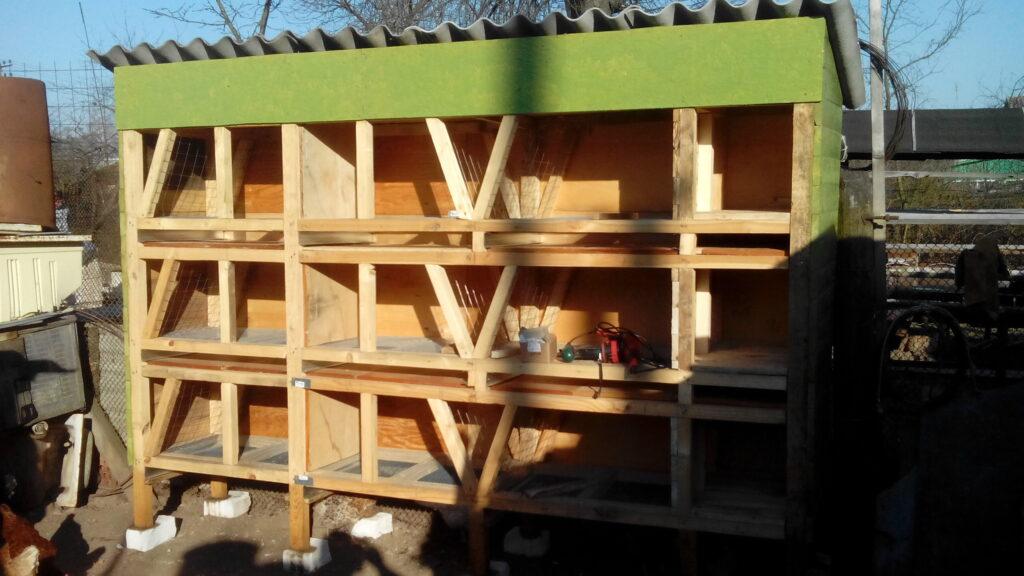
Doors
During the construction of the rabbitry, the door frame is made exactly to the size of the opening. Planks, mesh or chip plates are used as the door leaf. The handle, the locking mechanism and the hinges are taken with ordinary ones.

Roof
It is best to build a rabbitry with a pitched roof. For this, the front and rear walls of the building are made of different heights. Any roofing material can be used. The main thing is that the roof should not let the cold pass through, therefore, thermal insulation is placed on the roofing sheet. Most often, the roof is made of plank, and roofing felt or flexible shingles are laid on top.
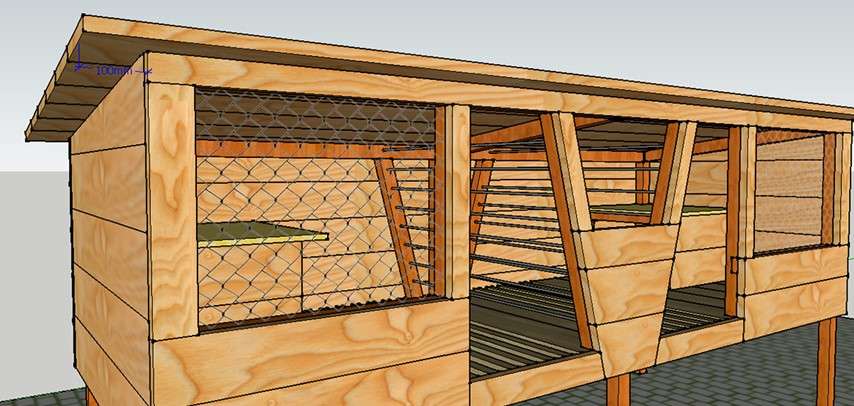
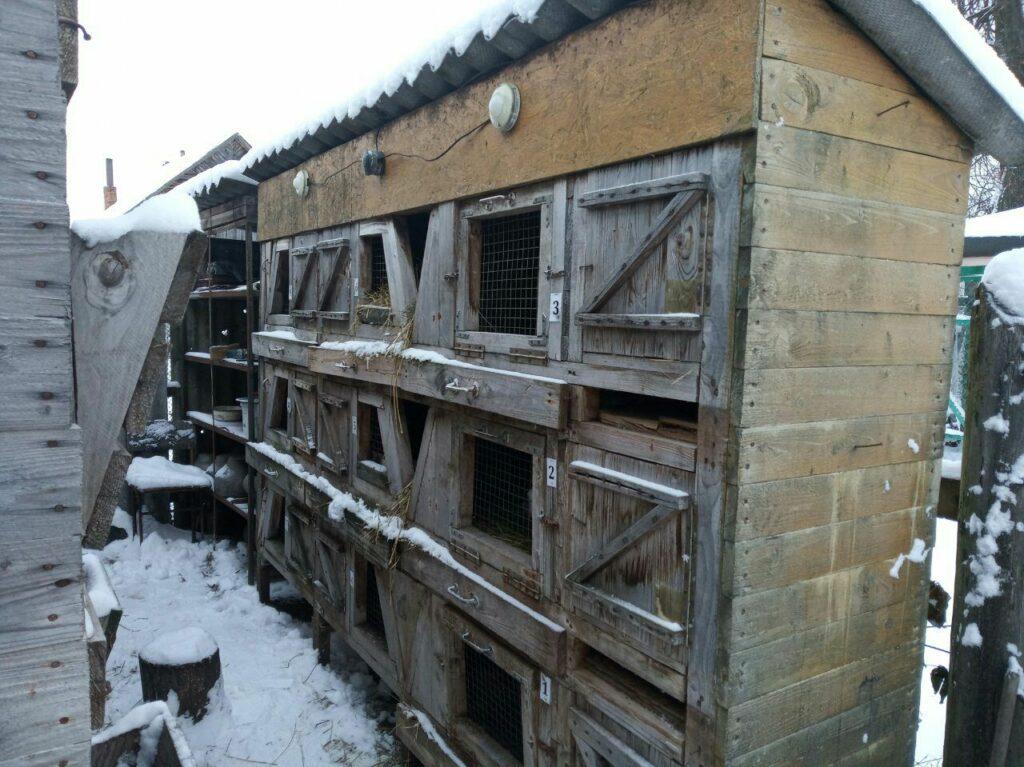
Sennik, drinkers, feeders
Drinking bowls are chosen so that they can be easily removed for washing and changing water. Usually, structures are chosen that are fixed to the door mesh or wall. The sennik is a V-shaped structure between two sections of a cage for two rabbits.For the cage where the young are kept, they use another option: part of one of the walls is made in the form of a lattice, to which a plywood or chipboard is attached in an inclined position. You can attach the sennik to the mesh door, then the drinker will have to be moved somewhere.
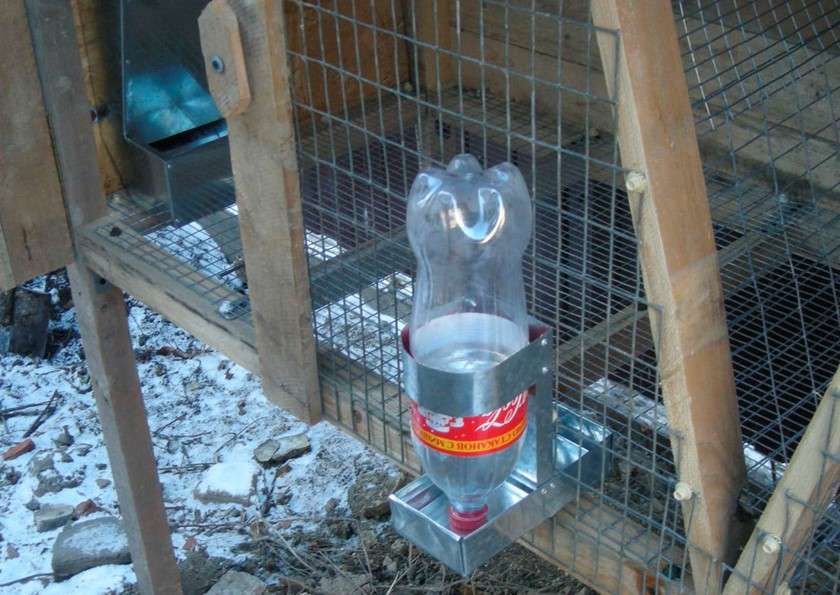
The feeder is made of any available material: plastic, metal, wood. If the feeder is wooden, then it is upholstered with tin plates, otherwise the rabbits will gnaw it.
What materials to make the frame and walls
The frame of the rabbitry is made by hand either from wooden beams or from a galvanized wall profile. Less often, you can see frames made of welded pipes. The design turns out to be heavy, therefore it is suitable for creating only stationary rabbitries. And the lightest frames are profile ones.
To create a rabbitry with your own hands, they do not use synthetic materials. They may contain toxic substances that are harmful to the body of rabbits.
Most often, wood materials are used for the frame and walls. The problem is that rabbits are capable of gnawing a wooden structure, so when building a building, they try not to make protruding corners. If some parts of the structure do protrude, then they are covered with a net or a tin plate. For young rabbits being fed for slaughter, cages can be made entirely of fine mesh.
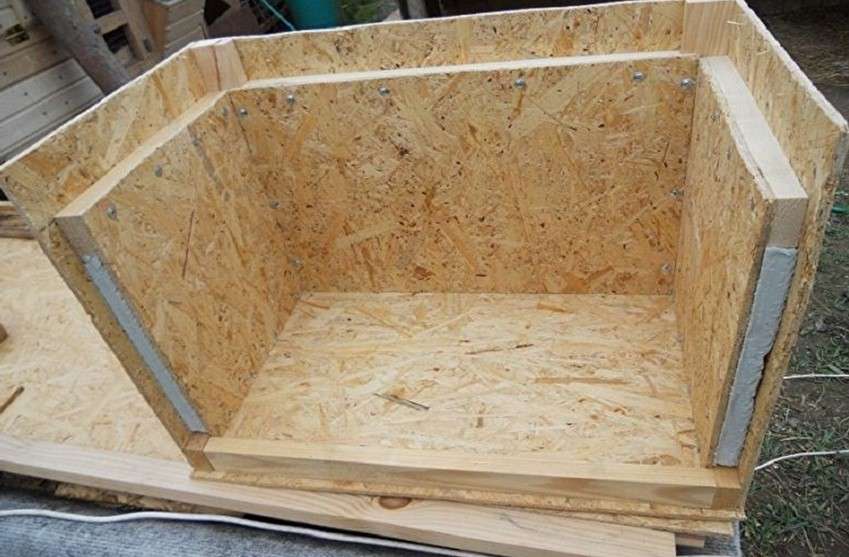
Arrangement inside
The rabbitry must be ventilated. If the cages are mesh, stand in the yard, then artificial ventilation is not required. If the cages are wooden or plywood, then for better air circulation, several narrow holes are made in the roof or upper part of the walls.
If the rabbitry is in a closed room, then artificial ventilation is indispensable. An anemostat is used as a ventilation device, which can be purchased at a hardware store.
The most convenient drinker for rabbits is the nipple drinker. It is made from a nipple, a plastic 2 mm pipe, a plug, a tee. Either a separate drinker is constructed for each section, or a common pipe, from which branches ending in a nipple extend through a tee into each section.
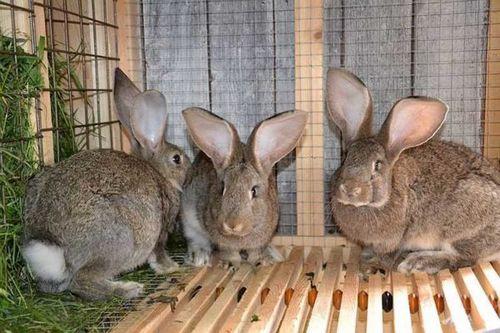
It is advisable to make a visor on the cage, which simplifies the cleaning procedure. It is made from a metal plate 10 cm wide and attached under the doors for the entire length of the cage. The visor prevents debris and feces from getting back inside after being washed out with water, as well as smearing the door.
How to heat in winter
The rabbitry in the yard is insulated for winter. The optimal winter insulation is foam plates, which cover the walls of the cages. And on top of the foam, plywood, chipboard or plastic panels are placed.
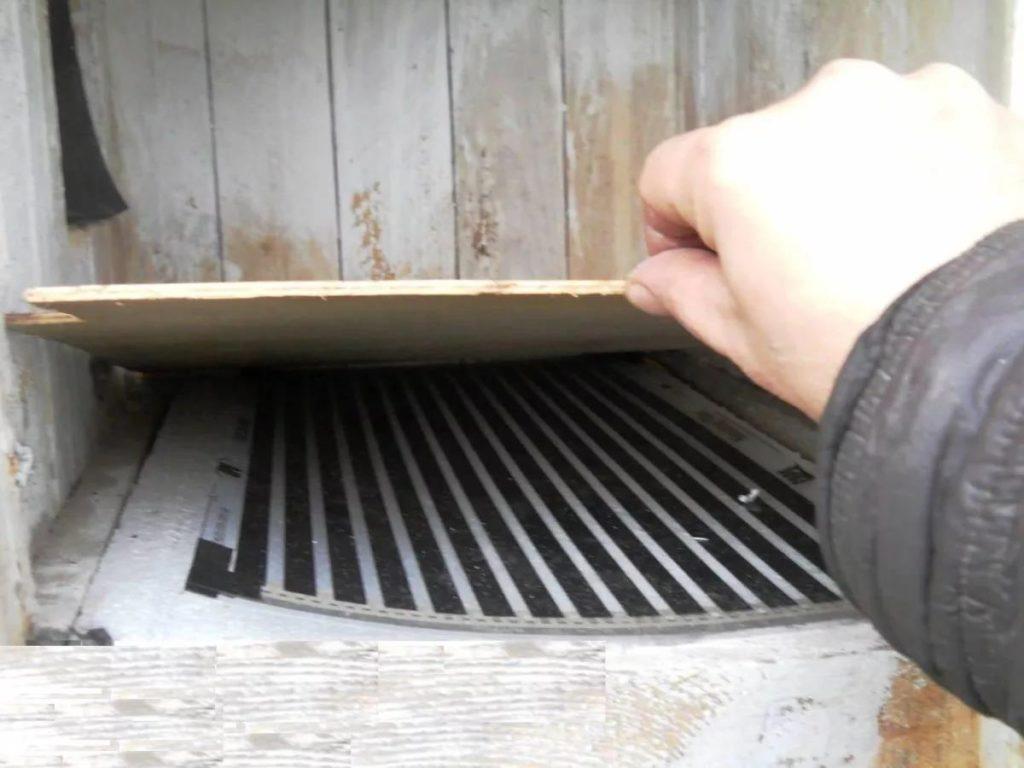
Care rules
The rabbitry must be properly looked after:
- change contaminated litter regularly;
- clean feeders and drinkers daily;
- throw away uneaten food, change water to fresh;
- regularly wash cells, remove feces and dirt;
- disinfect the rabbit dwelling every few months.
Rabbits are susceptible to adverse conditions. If you ignore the rules for caring for a rabbitry, then pets can pick up serious infectious pathologies.
